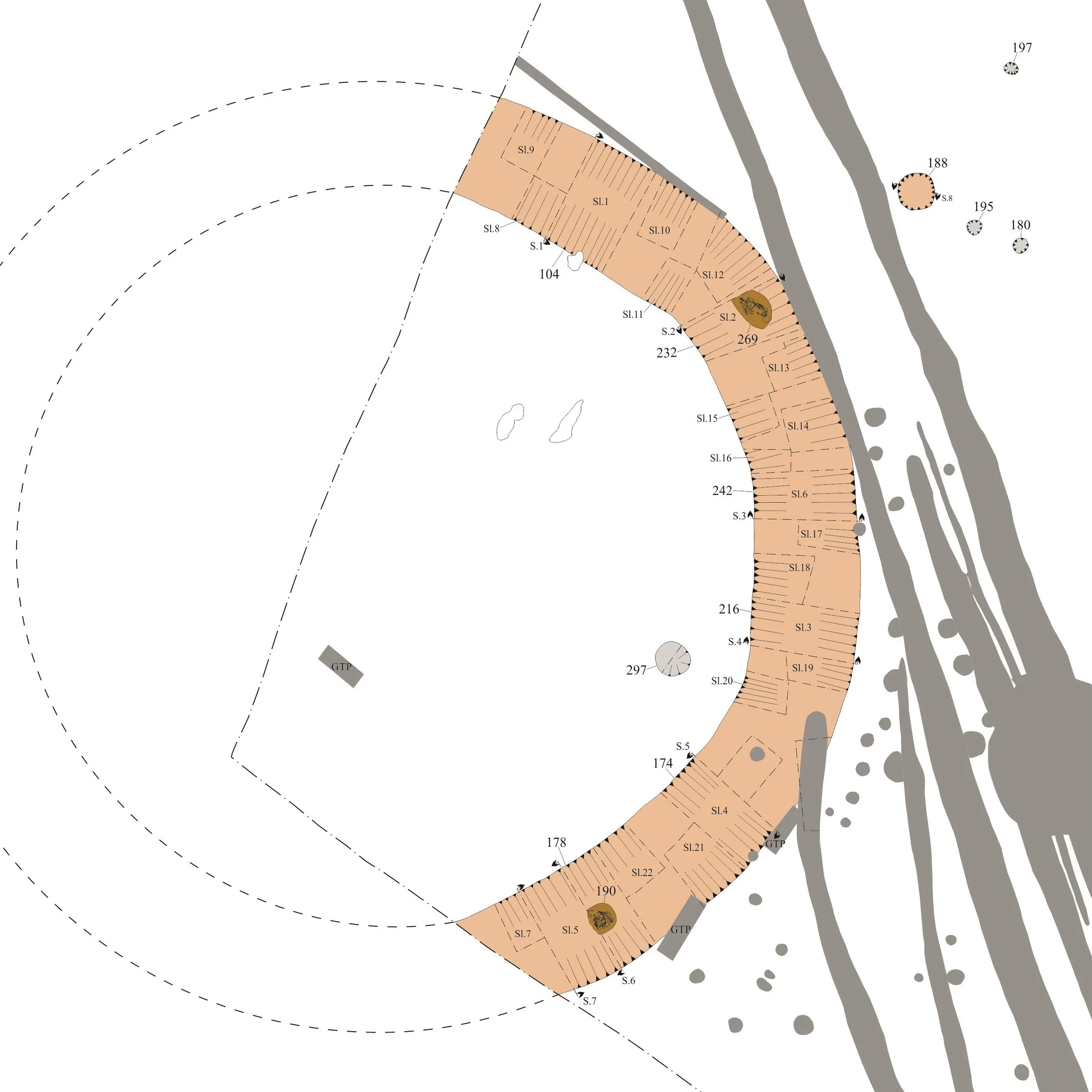JMHS Archives is the digital repository of some our grey literature reports.
For a full list of our grey literature reports, head to our Archaeology Data Service (ADS) page.
Park Road, Faringdon (2018)
Between 2012 and 2018 we carried out three stages of investigations at Park Road, Faringdon, where we discovered evidence of occupation beginning in the Mesolithic and culminating in the Roman period.
Between the 1st and 4th centuries, people living at the site carried out small industrial activities, agriculture, and perhaps some brewing! They built stone-lined wells, a corn dryer, one building with stone foundations (possibly used as a barn) and a variety of enclosures.
All Saints Church Burial Ground
All Saints Church, Faringdon, Oxfordshire (2013)
Between May and September 2013 we carried out an excavation to the north side of All Saints Church, resulted in the recovery of 341 inhumations.
Rural Anglican cemeteries have been less frequently subject to archaeological
investigation than urban churchyards, primarily on account of there being generally less pressure on space in respect of development needs. The data-set from All Saints, Faringdon, therefore, provides an important corresponding population to those excavated urban, Dissenting and Catholic cemeteries for the investigation of mortality rates, nutritional factors, disease, dentition and so forth in the later medieval, early modern and modern periods.
In contrast with the generally held impression of life in the medieval and later periods being largely nasty, brutish and short, the population data indicates good medical care in the case of several individuals; an amputee, a possible cancer-sufferer as well as a number of other individuals with less unusual pathologies were recovered during the excavation. There is also good representation of sub-adult remains.
Coventry Cathedral
Old St Michael's Cathedral, Coventry (2015)
Our work at St Michael's uncovered the structural remains relating to six phases of the Cathedral's development from the 11th to 15th centuries, as well as traces of two phases of restoration carried out in 1849 and 1851.
Yarnton Road, Cassington
Yarnton Road, Cassington (2015)
An archaeological excavation carried out between February and May 2014 revealed features covering a period from the Late Neolithic/ Early Bronze Age to the Late Roman Period.
The major feature investigated during the excavation was an Early Bronze Age ring ditch. Within the ditch itself were found two Middle Bronze Age Burials, one crouched and one seated. Cremation burials, dating to the roughly the same period as that of the inhumations, were also discovered on the site.
By the Iron Age the ring ditch had silted up, and the site had been incorporated into a wider agricultural landscape.
Drayton Road, Abingdon
Drayton Road, Abingdon (2016)
Our excavations just outside of the heart of Abingdon revealed archaeological remains dating from the Palaeolithic to Medieval period.
Littlemore Priory, Oxford
Littlemore Priory, Oxford (2015)
A series of Archaeological Investigations were carried out at the site of Littlemore Priory, later known as Minchery Farm, located at Littlemore. The excavations identified a general plan of the church and 92 burials, which represents one of the few collections of remains from a small English medieval nunnery.
Mongewell, Oxfordshire
Mongewell, Oxfordshire (2018)
An archaeological watching brief recorded the remains of Mongewell Rectory, which was a substantial post-medieval building, dating to the mid- to late- 17th century.
The excavation identified a series of phases of use for the site, with the finds including a red-brick floor in a herringbone pattern; a cellar; a well; a fireplace and chimney breast; and an earthenware vessel set into the corner of a floor.
Barton, Oxford
Barton, Oxford (2013-2020)
John Moore Heritage Services carried out several phases of archaeological investigation at Barton Village Road, enabling evidence relating to the development of medieval and post-medieval Barton to be recognised.
A programme of historic building recording (HBR) identified two separate structures, both with possible medieval origins.
A subsequent archaeological evaluation recorded a boundary ditch along the north western boundary of the site, considered likely to have been the medieval property boundary, then a supplementary archaeological watching brief revealed this to be a substantial boundary.









